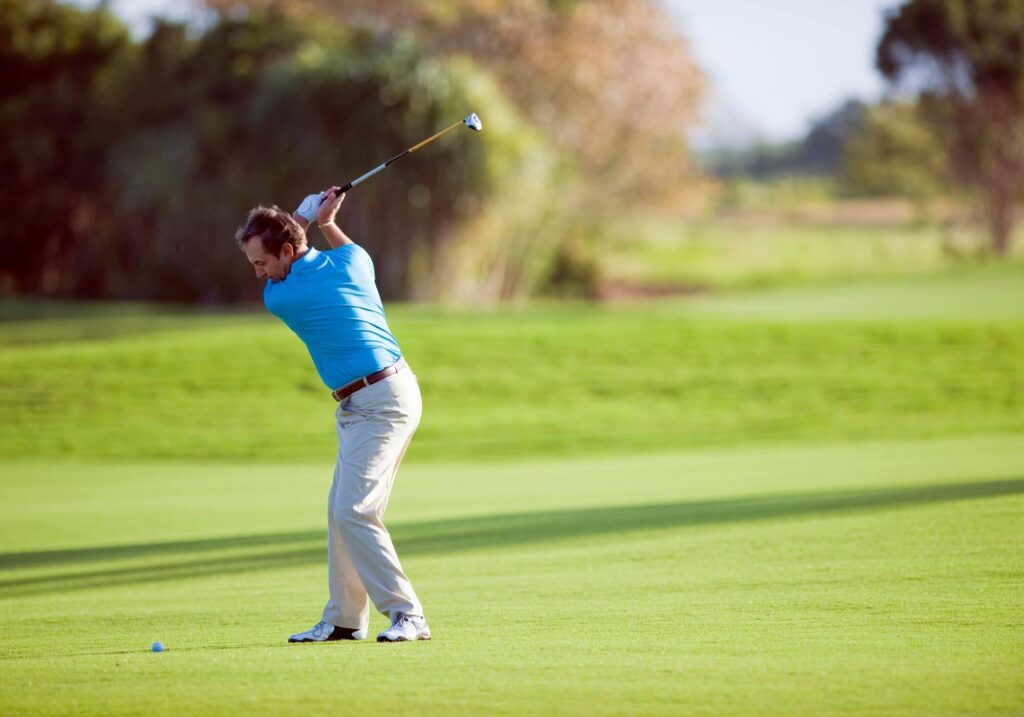Mastering Ball Position: When to Play it Back in Your Stance
Hey, fellow golfers! Let’s dive into a topic that’s often under-discussed yet super crucial to your game: ball position. Many of us think about our swings, grips, and maybe even our shoes, but ball placement? Not so much. It’s a common misconception that you should always play the ball back in your stance for wedges and short irons. Spoiler alert: that’s not always the best approach. In this article, we’ll break down when it makes sense to shift that ball back in your stance and when you might want to rethink that strategy.
Lowering Your Trajectory
First off, let’s talk about those moments when you want to hit a lower shot. Playing the ball back in your stance can help with that! When you move it back a bit, you’re making contact earlier in your swing arc, which gives you that steeper angle of attack. This is especially handy on windy days or when you find yourself in a tricky spot—like under a tree, where a nice low punch shot can save your hole.
That said, there’s a catch. If your clubface isn’t squared up or your swing path is off, you might find yourself hitting it low but also pulling left or pushing right. So, before you head out to the course, spend some time practicing this shot on the range to get your clubface under control.
Perfecting the Knockdown Shot
Now, let’s chat about the knockdown or “punch” shot. This shot is all about control and less loft, making it a good option when you really need to keep that ball down. Here, moving the ball back just a touch—think one or two inches—can help you compress the ball and reduce unwanted spin. This shot can be a lifesaver in windy conditions or if you’re having a rough time with your driver. Remember, though, you’re trying to fine-tune your shot, not overhaul your entire swing arc.
Dealing with Poor Lies
We all know that sinking feeling of a ball sitting down in the thick rough. In these cases, moving that ball back a bit can be your best friend. It helps you steepen your attack angle, which is key to making clean contact. But don’t get too carried away; this is a situational tactic, not something you should default to. For recovery shots, placing the ball just behind the center will often yield the best results.
Chips and Bump-and-Runs
When it comes to short game shots like chips or bump-and-runs, positioning the ball back in your stance can really pay off. It encourages a descending blow that helps generate more roll with less loft—perfect for those tricky greens. However, just a word of caution: don’t lean the handle too far forward! This can diminish your loft to the point where you might struggle to stop the ball on the green.
Using Drills Effectively
Are you practicing drills? The drop-back drill, where you pull your trail foot back, naturally places the ball slightly back in your stance too. This drill can help clear your hips and promote better swing sequencing. It’s a great way to work on your mechanics while seamlessly integrating ball position into your practice session.
Know When Not to Play it Back
Now that we’ve discussed a bunch of scenarios where moving the ball back in your stance can be beneficial, let’s flip the script. There are plenty of situations where playing the ball back can lead you astray:
Full swing wedge shots: Too steep of an angle can really mess up your distance control.
Mid or long irons off the fairway: You could end up pulling or thinning the shot.
Trying to hit a straight shot: A back ball position can unintentionally cause some serious curve.
- With the driver: Playing it back might lead to unfortunate fades or slices. You want your driver to help you unleash maximum distance, not hold you back!
Balancing Your Setup
If you find yourself playing every shot with the ball back in your stance, it might be time to reevaluate. Most golfers benefit from a neutral or centered ball position because it often allows for a more natural and consistent swing arc. Sure, shifting the ball back can be nifty for specific situations, but overdoing it can lead to complications that throw off your ball flight and consistency.
Wrapping It Up
Look, mastering ball position can be the difference between those sweet shots that keep your scorecard looking tidy and the ones that make you question your existence on the course. By understanding when to play the ball back in your stance and when to keep it centered or even forward, you’ll have more weaponry in your golfing arsenal. So get out there, practice these tips, and watch your game improve with solid ball placement!
For more in-depth advice, don’t miss our other articles on golf techniques and equipment. It’s all about getting the small details just right so you can unleash your full potential on the course. Happy golfing!


